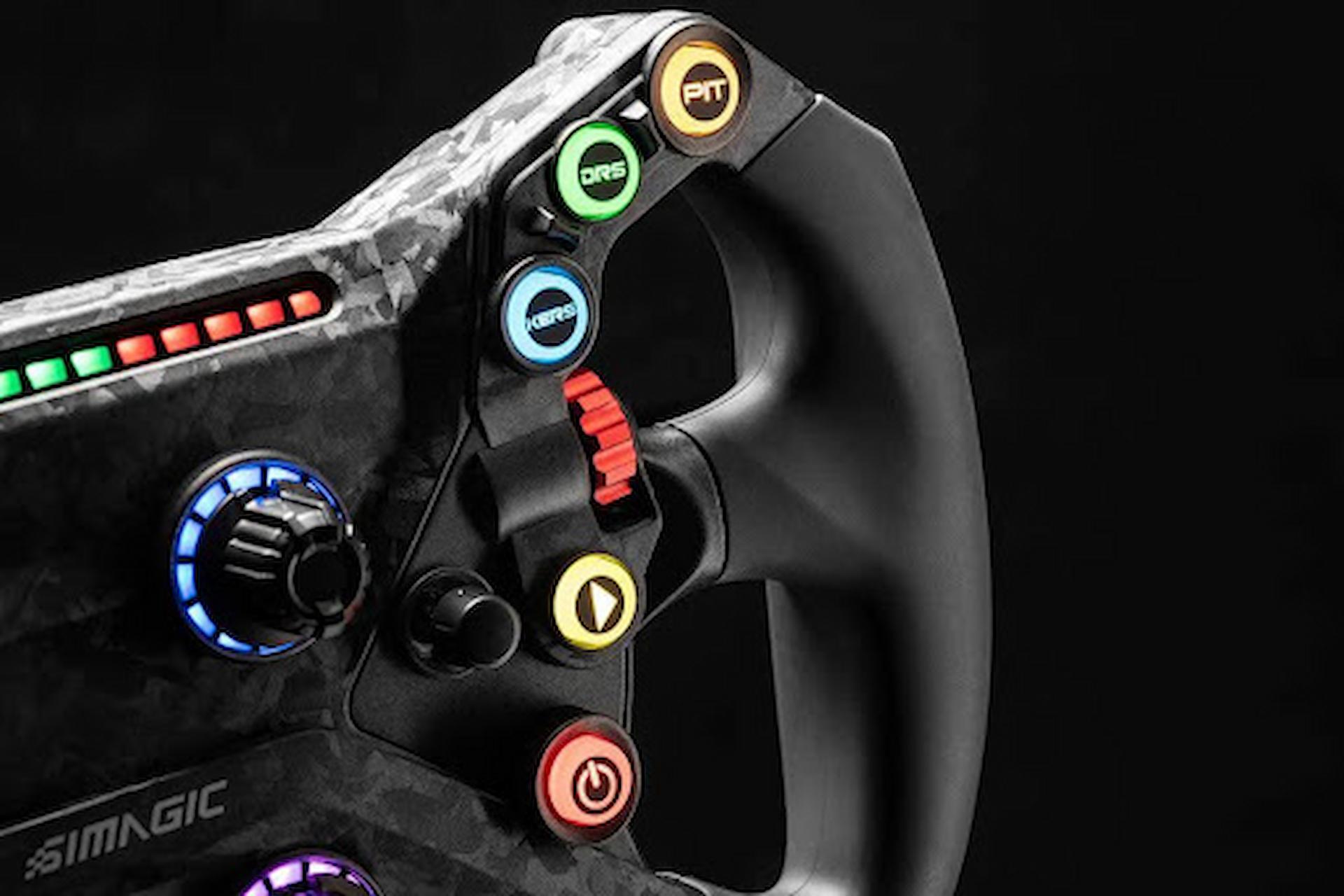Buckle up as we dive into the thrilling evolution of sim racing technology! From clunky arcade beginnings to hyper-realistic virtual tracks, discover how innovations in hardware, software, and AI have transformed this hobby into a professional training tool, making every lap feel like the real deal in just 50 words.
Imagine gripping a steering wheel that vibrates with every bump on a virtual track, feeling the G-forces as if you’re actually racing at Le Mans. That’s the magic of modern sim racing, a field that’s exploded in popularity and sophistication. Brands like Simagic have been at the forefront, delivering high-torque, direct-drive systems that make virtual driving indistinguishable from the real thing. In this article, we’ll explore how sim racing technology has advanced significantly in recent years, transforming bedrooms into high-octane cockpits.
The Roots of Sim Racing: Setting the Foundation
Sim racing didn’t start with cutting-edge VR headsets or AI coaches—it began humbly in the 1970s with arcade games like Atari’s Gran Trak 10, which introduced basic steering wheels and simple tracks. Fast-forward to the 1980s and 1990s, and games like Pole Position and Grand Prix Circuit brought 3D perspectives and early physics simulations, laying the groundwork for today’s immersive experiences.
By the early 2000s, the internet sparked a revolution. Titles like Forza Motorsport allowed online multiplayer, building communities where racers could compete globally. This era marked a shift from casual gaming to serious simulation, with improved graphics and controls that demanded more from players. As sim racing grew, so did its role in real-world training—professional drivers began using it to hone their skills without the risks or costs associated with actual track time.
Key takeaways from this foundational period:
- Arcade to Simulation Shift: Early games focused on fun; later ones emphasised accuracy.
- Community Building: Online features created leagues and esports, boosting engagement.
- Accessibility Boost: Affordable consoles made sim racing available to millions.
Breakthroughs in Hardware: Feeling the Road
One of the most exciting areas of evolution is sim racing hardware, which has become incredibly realistic thanks to advancements in force feedback, direct drive wheels, and motion platforms. Gone are the days of basic joysticks; today’s setups mimic every nuance of a race car.
Force feedback technology, for instance, has progressed from simple vibrations to sophisticated systems that replicate tire grip, understeer, and road textures. In recent years, load cell pedals—like those in advanced setups—measure pressure in addition to position, helping racers develop muscle memory for precise braking. Experts in the field, such as those from Fanatec, note that this has made sim racing an essential tool for F1 drivers practising consistent lap times.
Direct drive wheels represent another leap. Unlike older belt-driven models, these connect the motor directly to the wheel for instantaneous response and higher torque. Brands pushing this innovation include Simagic, whose ecosystems offer 10NM to 24NM bases, providing pro-grade realism that feels like steering a real motorsport vehicle. This middle-ground advancement has made high-end simulation accessible without breaking the bank.
Motion platforms have also evolved, with hydraulic and electric systems now simulating pitch, roll, and yaw. Recent models integrate with VR for full immersion, transforming a static chair into a dynamic rig that responds to every movement.
Actionable tips for upgrading your hardware:
- Start with a quality wheel base: Look for at least 5NM torque for beginners to feel the difference.
- Invest in load cell pedals: They improve braking control—practice threshold braking in games like iRacing.
- Add a motion add-on: If budget allows, pair it with your existing seat for enhanced feedback without a full rig overhaul.
Software Innovations: Realism in Every Pixel
On the software side, sim racing games have undergone significant transformations, thanks to advancements in physics engines and graphics. Early 2000s titles like rFactor introduced modular physics, allowing customizable tire models and dynamic tracks. Today, games such as Assetto Corsa and iRacing use laser-scanned circuits, where every bump and elevation is replicated for pinpoint accuracy.
Graphics have evolved from pixelated sprites to photorealistic renders, thanks to the power of GPUs. Virtual reality (VR) integration, popularised in the last decade, lets you look around the cockpit as if you’re there—headsets like Oculus Quest make this seamless. Augmented reality (AR) is emerging too, overlaying data like lap times onto your view.
Expert insights highlight how these changes bridge the gap between virtual and real-world racing. Developers from studios like Kunos Simulazioni emphasise that advanced simulations now account for variables like tire wear and weather, training drivers in scenarios they’d rarely encounter on track.
To make the most of software advancements:
- Choose the Right Title: Beginners try Gran Turismo for its balance; pros opt for iRacing’s competitive edge.
- Tweak Settings: Adjust force feedback strength to match your hardware—start low to avoid overwhelming inputs.
- Use Mods: Community-created content in games like rFactor adds new cars and tracks for endless variety.
The Rise of AI and Future Horizons
Artificial intelligence is the newest frontier in sim racing evolution, reshaping how we train and compete. AI coaches analyse your laps, suggesting optimal braking points and racing lines in real time. Tools in platforms like Podium AI predict strategies based on tire degradation or opponent behaviour, giving an edge in esports events.
Looking ahead, AI could introduce autonomous rivals that adapt to your style, making solo sessions more challenging. With market growth projected at 11.8% CAGR through 2031, expect more integration of VR/AR, active pedals that simulate ABS, and even haptic suits for full-body feedback. Industry experts predict sim racing will blur lines further with real motorsports, potentially featuring hybrid events where virtual and physical racers compete.
Bullet points on future trends:
- AI-Driven Coaching: Personalized feedback to shave seconds off laps.
- Enhanced Immersion: Haptic tech for feeling crashes or gravel.
- Esports Expansion: More pro leagues with million-dollar prizes.
Wrapping Up
From its arcade roots to AI-powered futures, sim racing technology has evolved into a powerhouse that entertains, trains, and inspires. Whether you’re a casual gamer or aspiring pro, these advancements make the thrill of racing accessible anytime. Brands like Simagic continue to innovate, ensuring the next generation of hardware keeps pushing boundaries. So, grab your wheel, fire up your rig, and experience the ride—sim racing isn’t just a game; it’s the future of motorsports.




